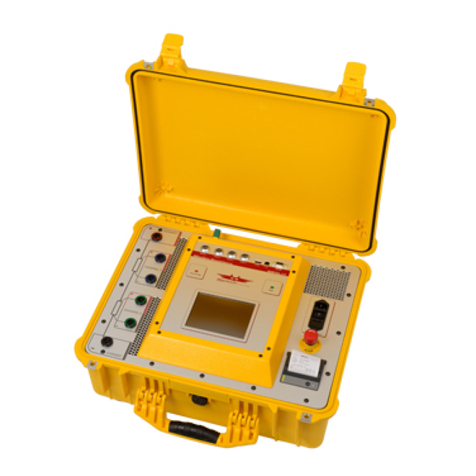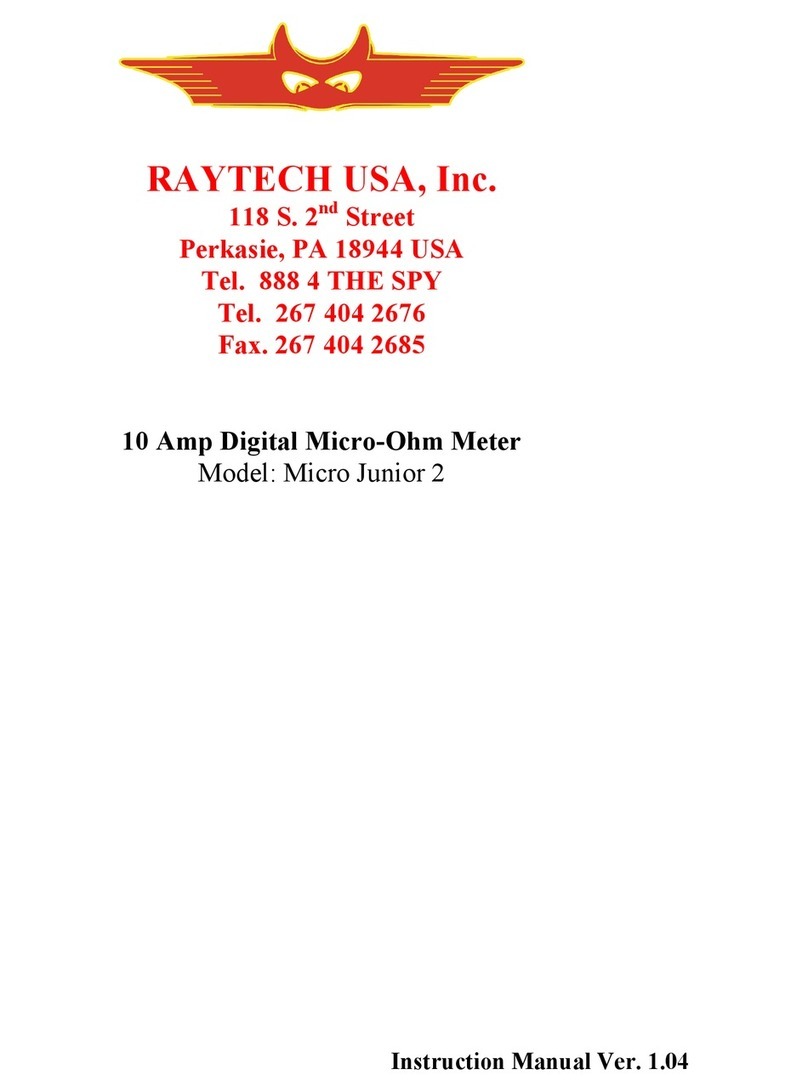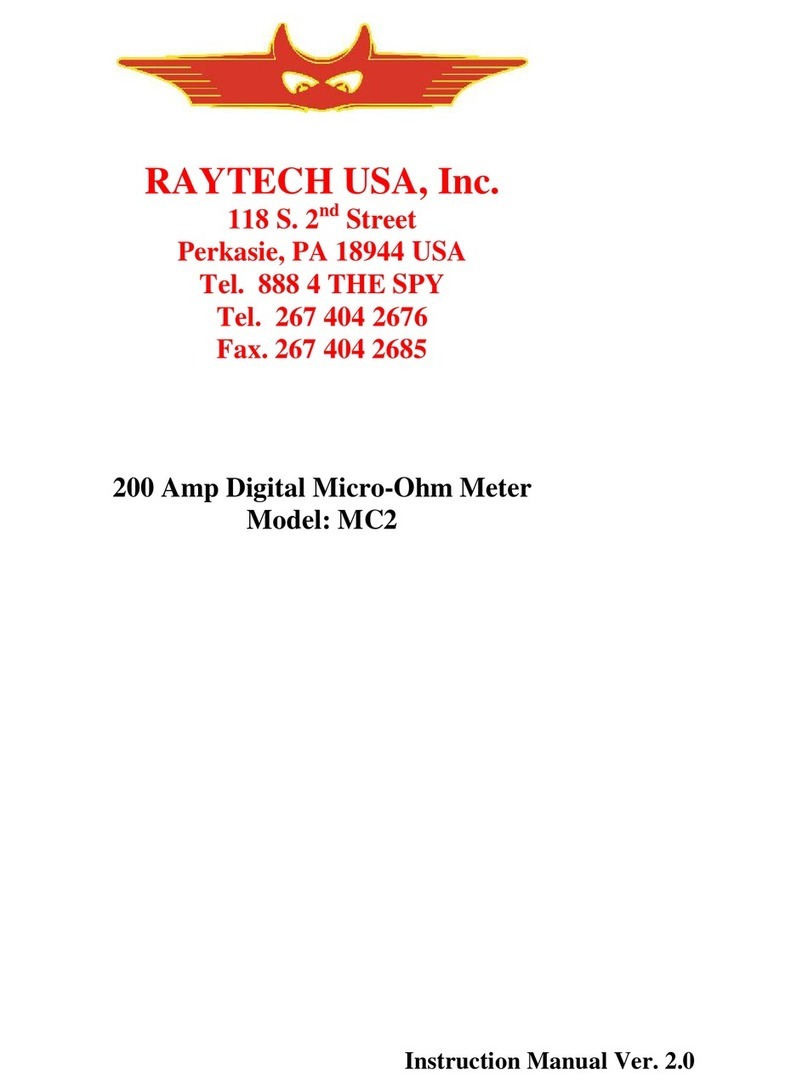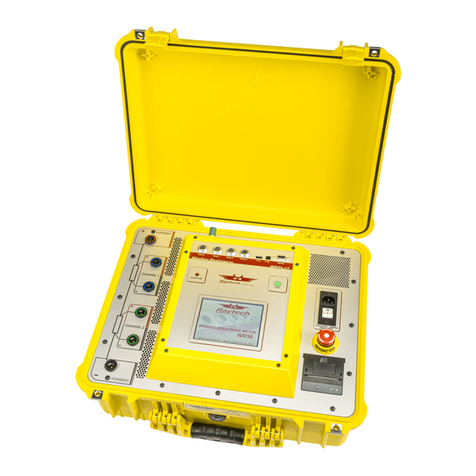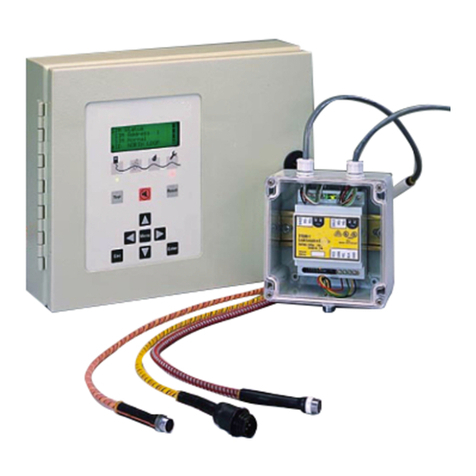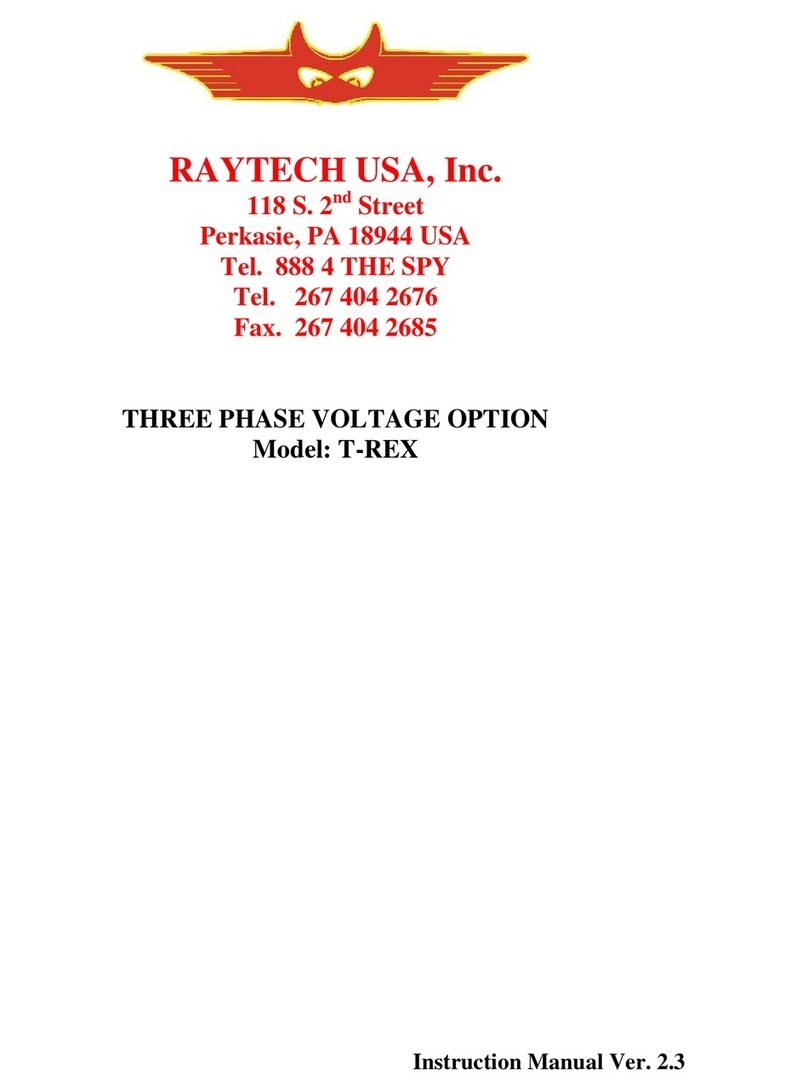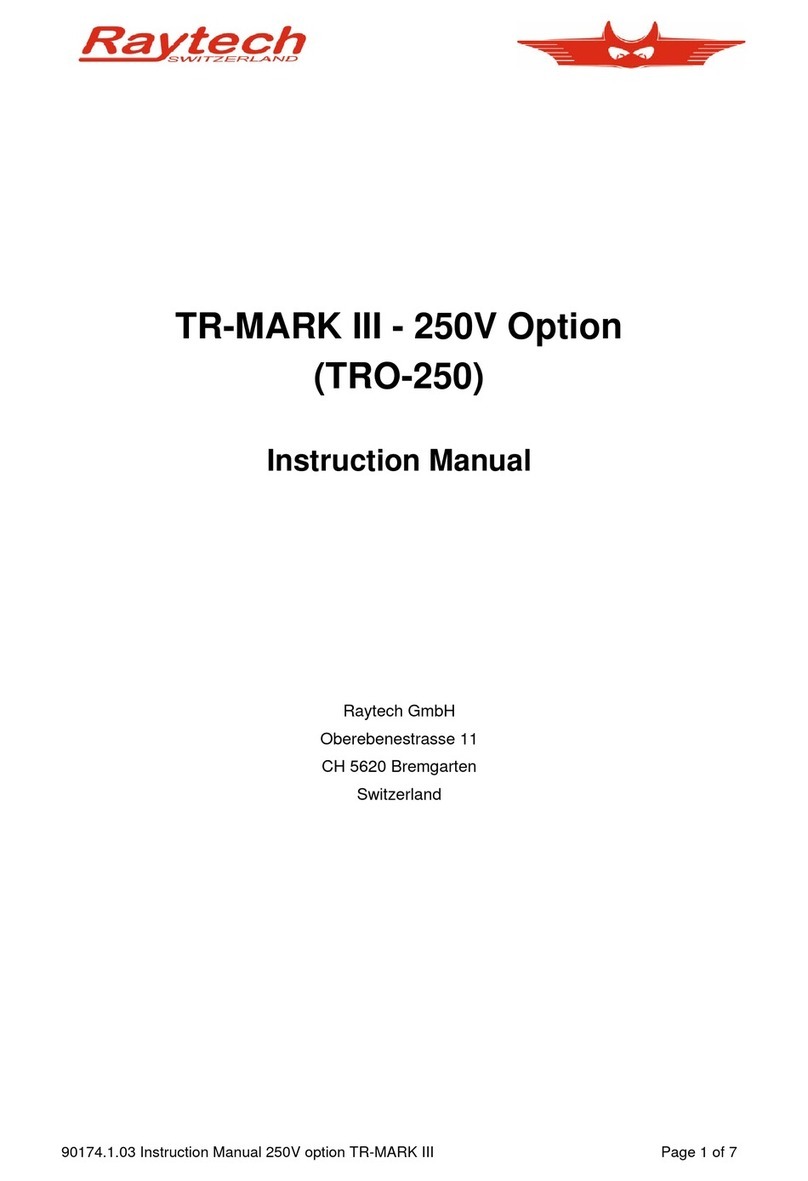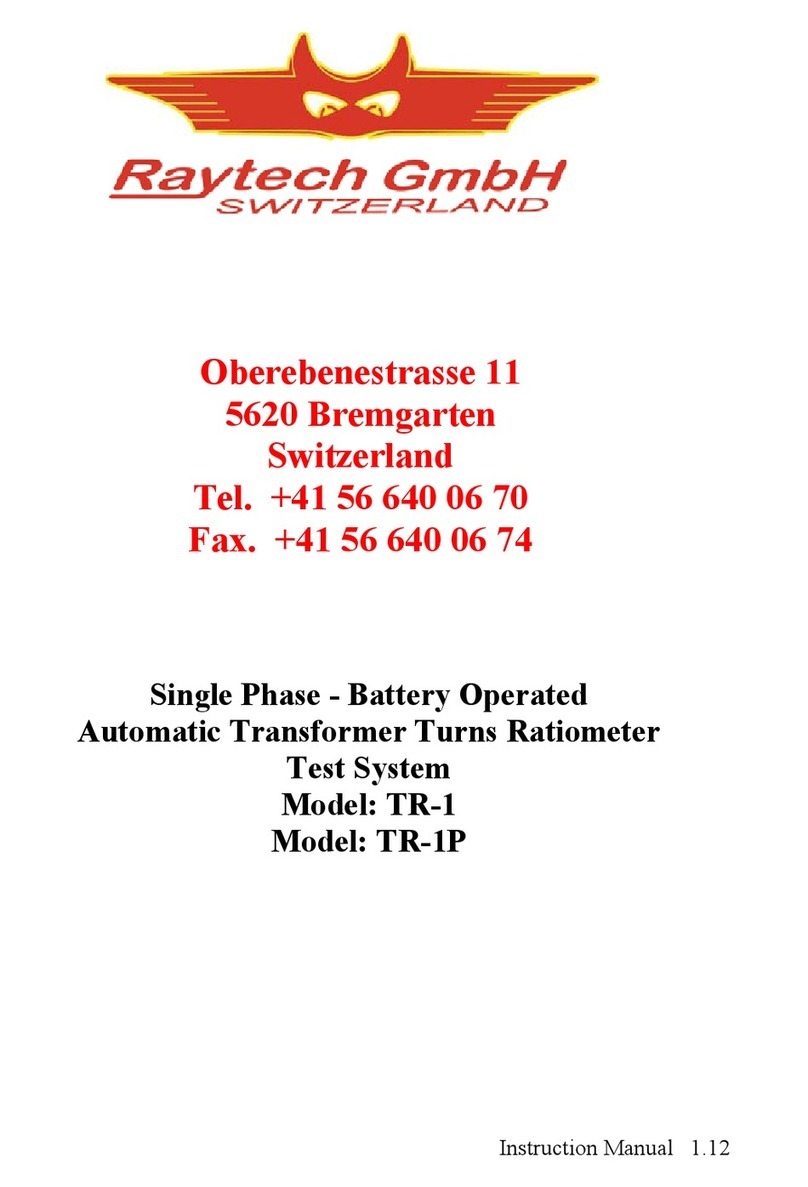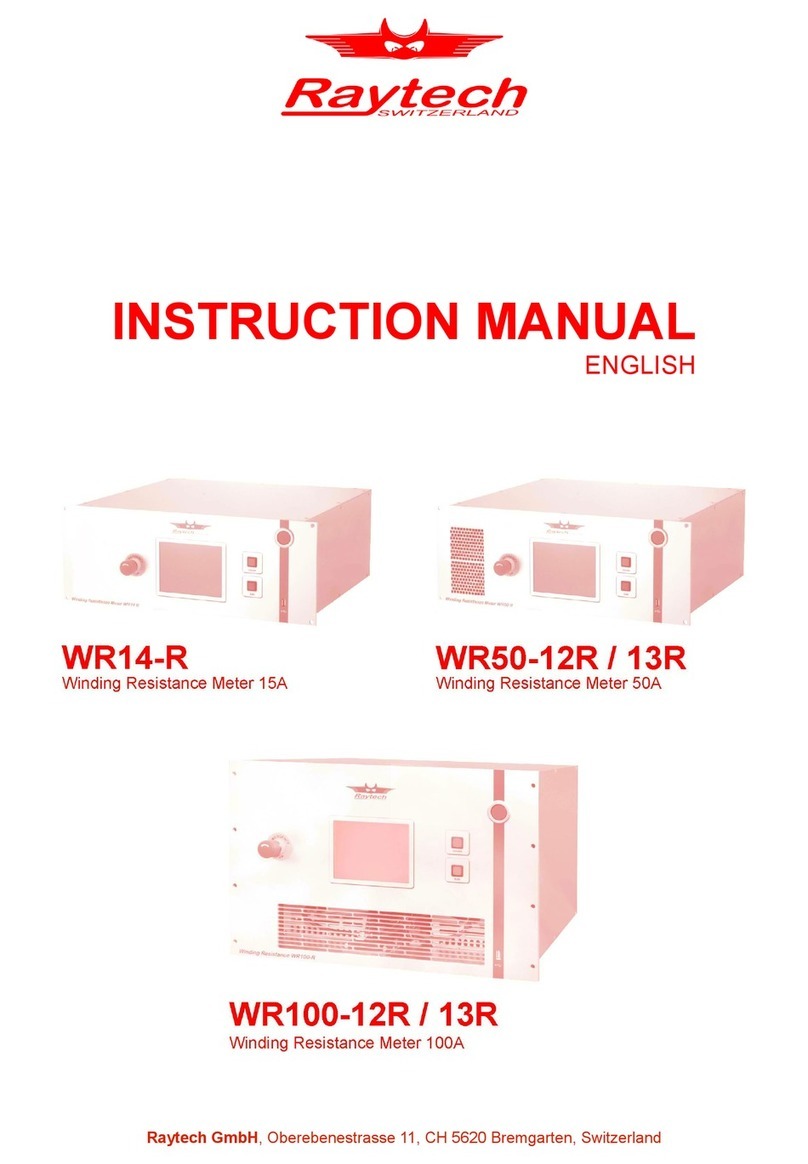90100.1.02 Instruction Manual TR-MARK III Page 2 of 70
Contents
1
Safety Precautions.......................................................................................................................... 4
2
Unpacking ....................................................................................................................................... 6
3
Introduction ..................................................................................................................................... 7
3.1
History .................................................................................................................................................. 7
3.2
General................................................................................................................................................. 7
3.3
Advantages & Features ........................................................................................................................ 8
3.4
System Details...................................................................................................................................... 9
3.4.1
System Check:................................................................................................................................. 9
3.4.2
Transformer Turns Ratio Testing: .................................................................................................... 9
3.4.3
Transformer Turns Ratio Meter uses: ............................................................................................ 10
3.4.4
Limitations of Turns Ratio Testing: ................................................................................................ 11
4
Quick Start Guide ......................................................................................................................... 12
4.1
Instrument operation........................................................................................................................... 12
4.2
Connection to Test Object.................................................................................................................. 13
4.2.1
Hooking up a transformer .............................................................................................................. 13
4.2.2
Comparison of International Standards ......................................................................................... 14
5
Operation Elements Field Case.................................................................................................... 15
5.1
Front Panel Overview......................................................................................................................... 15
5.2
Control Elements and Plugs ............................................................................................................... 15
5.2.1
Fuse, Mains Input and Mains Switch ............................................................................................. 15
5.2.2
Ground Terminal............................................................................................................................ 15
5.2.3
Emergency Stop ............................................................................................................................ 16
5.2.4
High Voltage Side.......................................................................................................................... 16
5.2.5
Low Voltage Side........................................................................................................................... 16
5.2.6
3 Phase Extension (T-REX)........................................................................................................... 16
5.2.7
External ......................................................................................................................................... 16
5.2.8
Interface......................................................................................................................................... 16
5.2.9
Safety Indicator.............................................................................................................................. 16
5.2.10
Display and Touch Panel .......................................................................................................... 16
5.2.11
Thermal Printer ......................................................................................................................... 16
6
Operation Elements Rack............................................................................................................. 17
6.1
Rack: Front Panel Overview............................................................................................................... 17
6.2
Rack: Rear Panel Overview ............................................................................................................... 17
7
Transformer, Measurement and Data Structure........................................................................... 18
7.1
Introduction......................................................................................................................................... 18
7.2
How it works ....................................................................................................................................... 18
8
Operating Menu ............................................................................................................................ 20
8.1
Main Screen ....................................................................................................................................... 21
8.1.1
Operating on a simple screen, no Transformer Data entered........................................................ 21
8.1.2
Further Options of Main screen ..................................................................................................... 23
8.1.3
Operating on an advanced Screen, Transformer Data entered ..................................................... 25
8.1.4
Taps............................................................................................................................................... 27
8.1.5
More Taps...................................................................................................................................... 29
8.1.6
Tertiary Winding System................................................................................................................ 30
8.2
New .................................................................................................................................................... 32
8.2.1
New Transformer ........................................................................................................................... 33
8.2.2
Load from Archive.......................................................................................................................... 36
8.2.3
Copy Actual Transformer............................................................................................................... 37
8.2.4
New Measurement......................................................................................................................... 38
8.2.5
Working with Templates ................................................................................................................ 38
8.3
Info ..................................................................................................................................................... 39
8.3.1
Enter Tap Changer Data by Wizard............................................................................................... 41
8.3.2
Enter Tap Changer Data manually ................................................................................................ 41
